Alaska’s natural beauty has so much wild, edible food to offer – if you know what you’re looking for.
What time of year do you harvest fiddlehead ferns?
In early June, I went searching for young fiddlehead fern growth.
Because you only harvest the small, youngest, tender fiddleheads that are still curled up, most people go fiddlehead foraging in early May, which is when the first start to appear for the season.
But even now (early July), when I go on creek-side walks, I’ve been paying attention to the base of adult fiddlehead fern bunches. Although the young growth is harder to find, it’s still very possible to go foraging for edible fiddlheads well into Alaska’s summer months.
(Just don’t expect the same yield as if you went in late spring.)
How to find fiddlehead ferns
When they’re first popping up for the year, they’re quite small, as each little fiddlehead emerges from the ground. But as those young fiddleheads grow bigger and taller, they uncurl and form the plant’s long, feathered limbs.
Mature fiddlehead ferns are big, bushy plants.
In my observation, they generally prefer to grow near water (or very moist soil) and in areas of only partial sun.
If there’s a partially or fully wooded area with a small creek running through, chances are you’ll find happy fiddleheads growing right up next to the water.
How to harvest fiddlehead ferns: identifying the edible part
Even though the fiddlehead fern plants are alive and thriving for many months in Alaska, there’s only a certain part of the plant that’s really tasty – the young, fairly uncurled growth near the base of the plant.
Here’s a photo of a small fiddlehead with my hand behind it, for size reference.
The young growth is what you’re looking for.
Although I didn’t cut the young fiddlehead in the photo above (this fern only had two sprouts – I didn’t want to kill the plant), that’s the size you want to cut.
When you find small fiddleheads, still curled, take a sharp knife and make a clean cut at the base. Young growth like this is still very tender – it will be easy to cut.
No matter the size of the foliage on top, always look to the base of the plant, carefully checking between fern leaves, to find the tender, edible baby curls.
See where my hand is pointing at the base of the plant in the below photo.
Respectful harvesting – the forager’s way
Foraging – being able to identify and harvest your food from nature’s wilderness – is an incredible privilege.
When I was looking for fiddleheads to cut, I occasionally found plants that had clearly already been harvested. I could tell because of all of the cut stalks.
Anytime I saw a fern like this, I moved along without taking more from the plant that had already given so much.
When you’re foraging, always remember to be respectful.
Never gather, cut, or pick too much from one area. That’s the forager’s way of life. Because if you over harvest an area, you can really cause damage to next year’s abundance.
And hey – wildlife depend on foraging, too. Don’t be a jerk and steal all of their food. There’s plenty for us all to share.
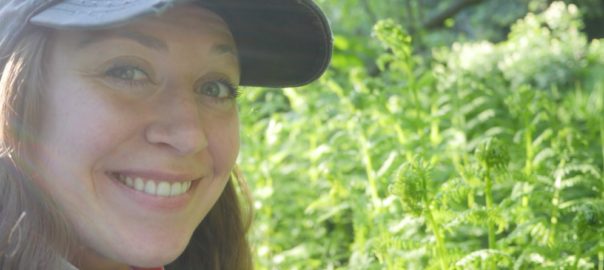
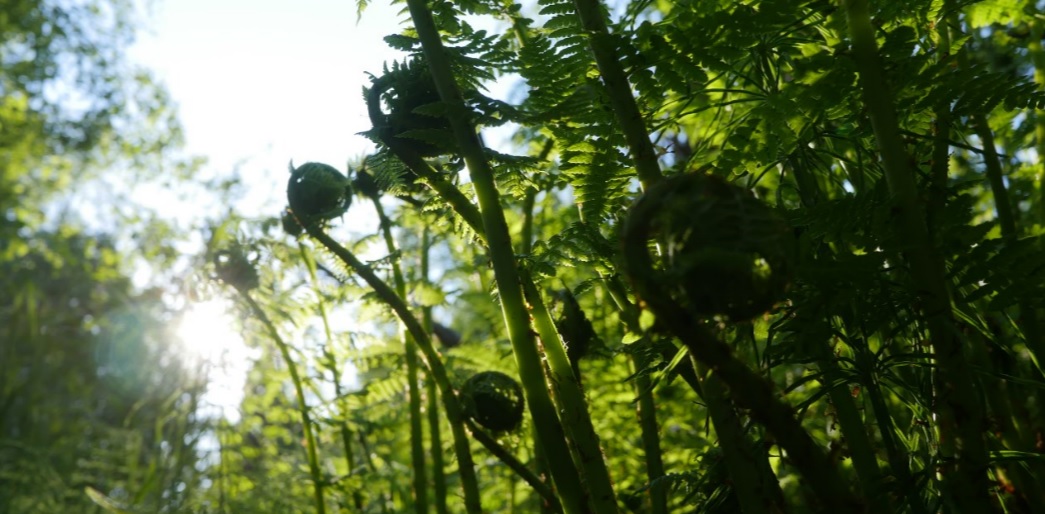

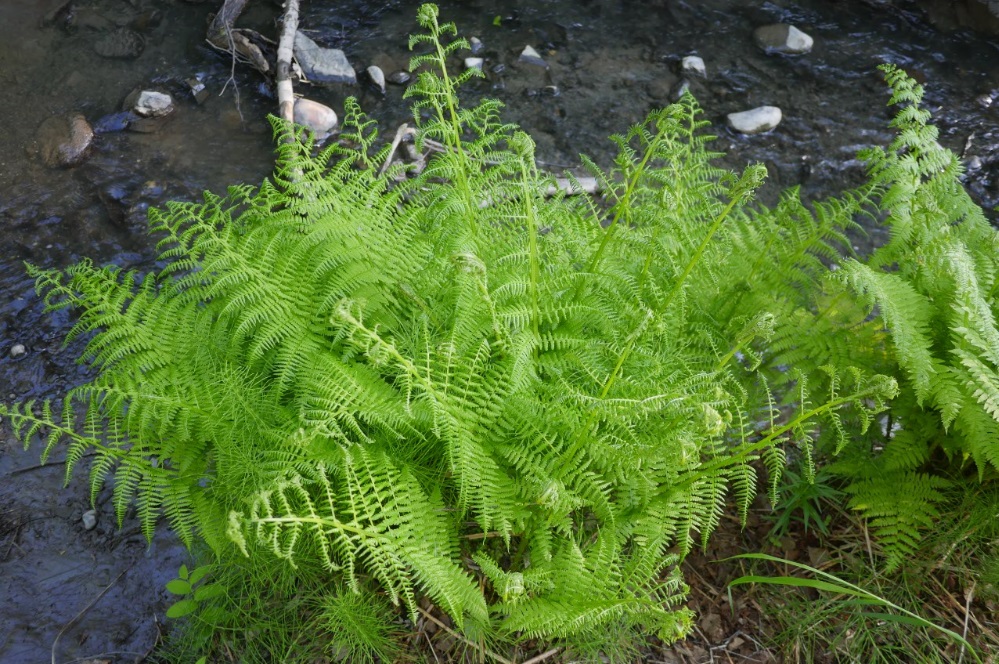

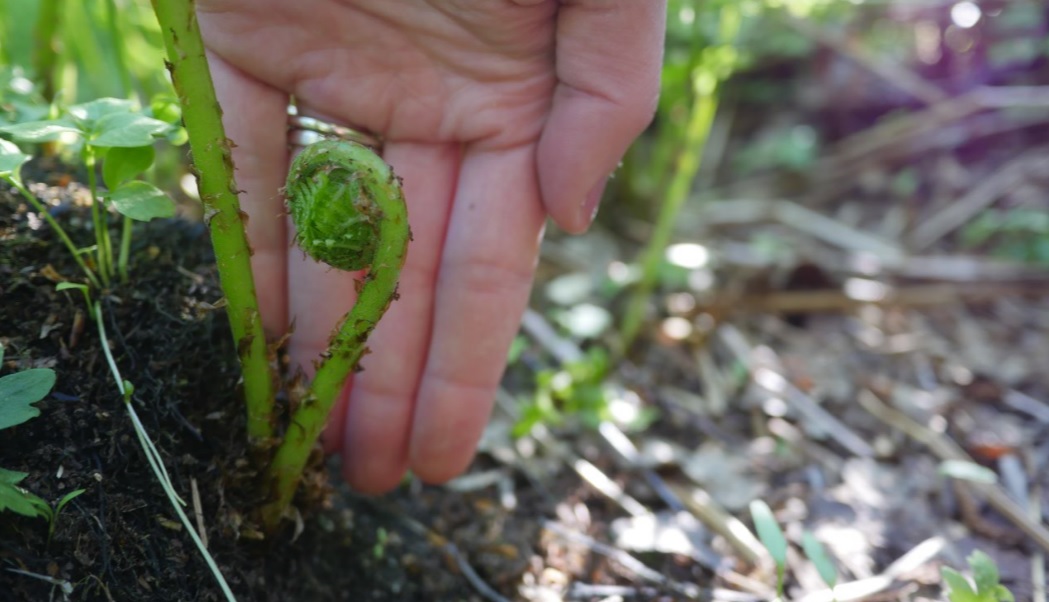

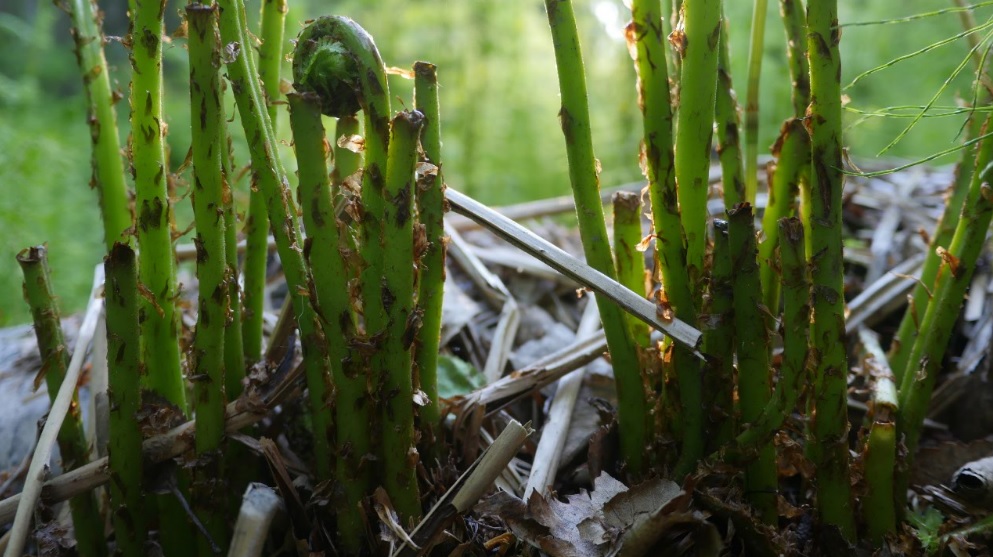

Great info, thanks. Always wondered about fiddleheads.
The text says, take a sharp knife and cut at the base. But judging by the bare stalks, I’m going to assume they mean the base of the curl or have the stalks grown that much after harvesting?
Also love the advice re: foraging.
Do they have a distinctive taste? I’ve never eaten one. Are they best boiled, steamed, fried, raw in a salad?
Hi Cecil – the photo of the cut stalks was a result of someone (or something) before me. I cut at the very base of the plant, literally as low as I can go before I cut into dirt. I oven roasted this batch with some salt and butter until tender. It tasted similar to asparagus but had more of an okra texture, in my opinion.